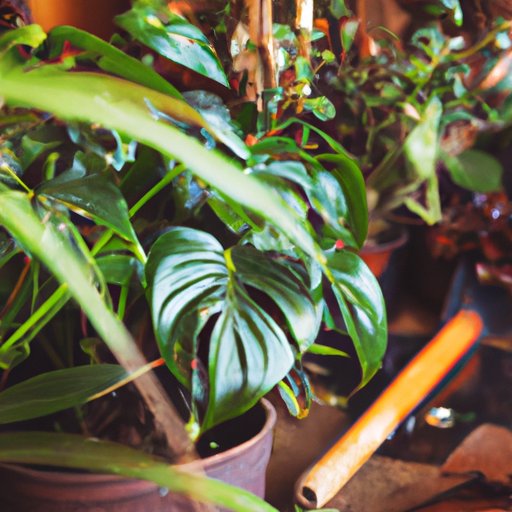How to Keep Indoor Plants Healthy: A Comprehensive Guide
Indoor plants are a great way to bring life and fresh air into your home. They provide a natural touch to any space and can even improve your well-being. However, many people struggle with keeping their indoor plants healthy. In this article, we will provide you with a comprehensive guide on how to care for your indoor plants to keep them happy and thriving.
Choosing the Right Pot and Soil
Choosing the right pot and soil for your indoor plant is essential for its health and growth. The pot you choose should be suitable for your plant’s size and ensure proper drainage. Terra cotta pots are a good option for most plants as they allow air and moisture to pass through. Additionally, it’s important to use the right type of soil mix for your plant. A good quality potting soil with added fertilizer is ideal. Alternatively, you can make your potting mix by combining peat moss, vermiculite, and perlite.
Proper Watering Techniques
Watering your indoor plants correctly is crucial to their health. Some plants need more water than others, while others are more susceptible to root rot if over-watered. Generally, indoor plants should be watered when the top inch of soil is dry. The frequency of watering depends on the plant’s species and the environment’s humidity and temperature. Additionally, it’s best to use room-temperature water and avoid over-watering.
Adequate Sunlight and Temperature
Most indoor plants require adequate sunlight to thrive. However, the ideal amount of sunlight varies from plant to plant. Some plants, like succulents and cacti, thrive in direct sunlight, while others, like peace lilies and ferns, prefer indirect sunlight. It’s essential to place your plant in the right spot in your home and rotate it often to ensure all sides receive adequate sunlight.
In addition to sunlight, indoor plants require a specific temperature range to remain healthy. Most household plants thrive between 60-75°F (15-24°C) during the day and 55-60°F (12-15°C) at night. However, some plants, including tropical species, require higher temperatures to grow.
Fertilizing Indoor Plants
Fertilizing indoor plants helps them grow robust and healthy. It’s important to use the right type of fertilizer for your plant. There’s a wide variety of organic and synthetic fertilizers available, each with its benefits. Water-soluble fertilizers are easy to apply, and slow-release fertilizers can provide nutrients over an extended period. It’s crucial not to over-fertilize your plant, as this can cause root burn or growth problems.
Preventing Pests and Diseases
Indoor plants are susceptible to pests and diseases, just like outdoor plants. Common pests include spider mites, aphids, and mealybugs. Diseases like root rot, leaf spot, and powdery mildew can also affect your plant’s health. It’s essential to inspect your plants regularly and quickly identify and treat any issues. Practicing good hygiene and not over-watering can also help to prevent pest and disease problems.
Repotting and Pruning
Repotting and pruning your indoor plant can help it grow and remain healthy. Over time, your plant may outgrow its pot, and it may need a larger pot to flourish. Similarly, pruning your plant removes dead or damaged leaves and encourages healthy growth. You can also propagate your plant using cuttings from a healthy specimen.
Conclusion
Indoor plants are a great way to improve indoor air quality and add beauty to your home. By choosing the right pot and soil, watering your plant correctly, providing adequate sunlight and temperature, fertilizing it regularly, preventing pests and diseases, and repotting and pruning it as necessary, you can keep your indoor plant healthy and thriving for years to come.
Remember to always research your specific plant’s needs and adjust your care accordingly. With a little patience and care, you will be rewarded with a beautiful, healthy indoor garden.
Additional Resources
